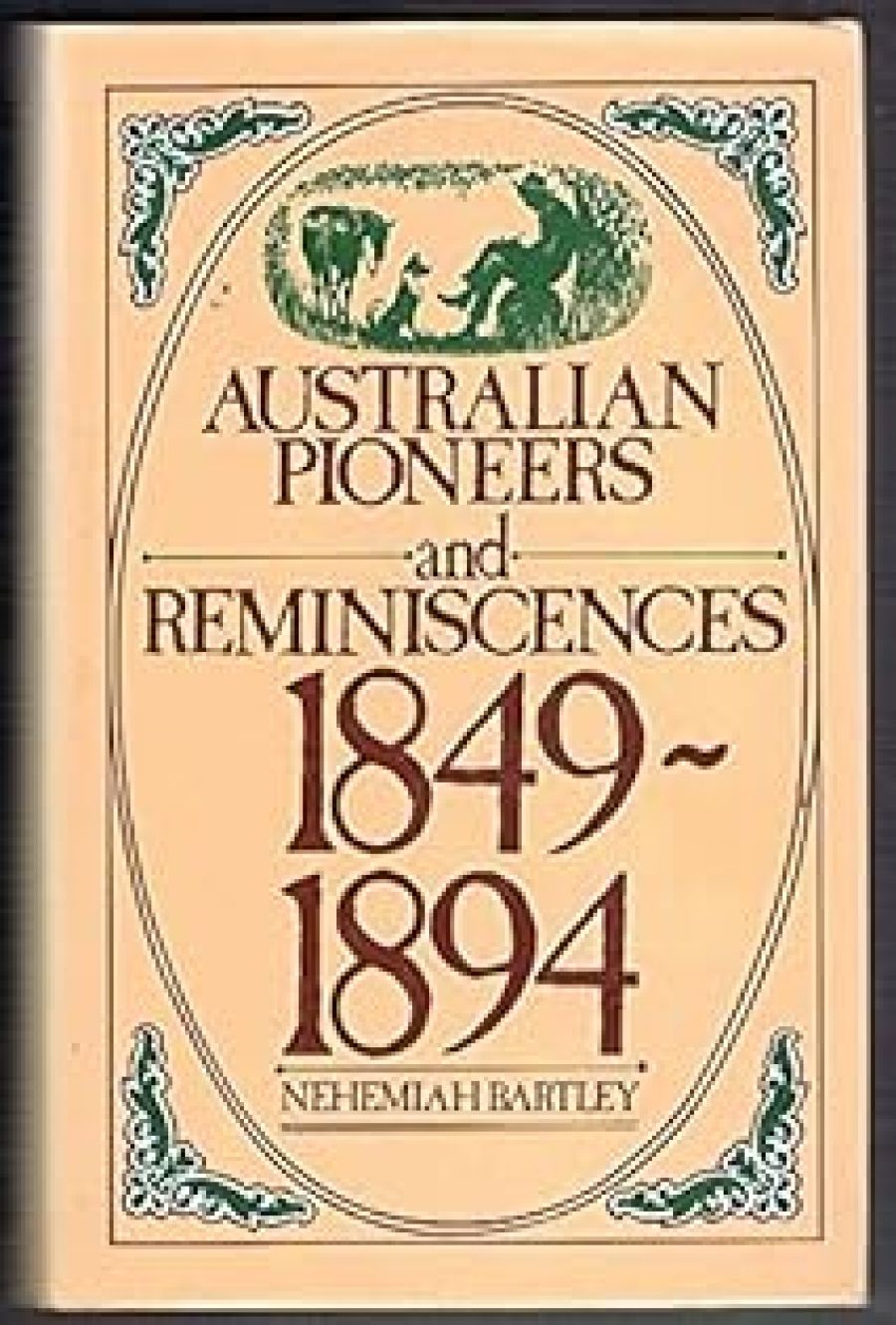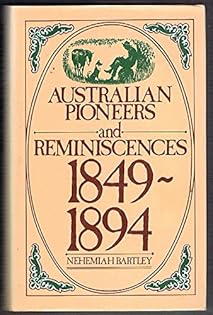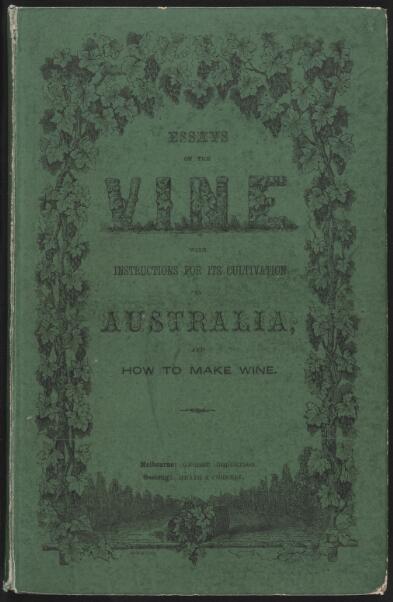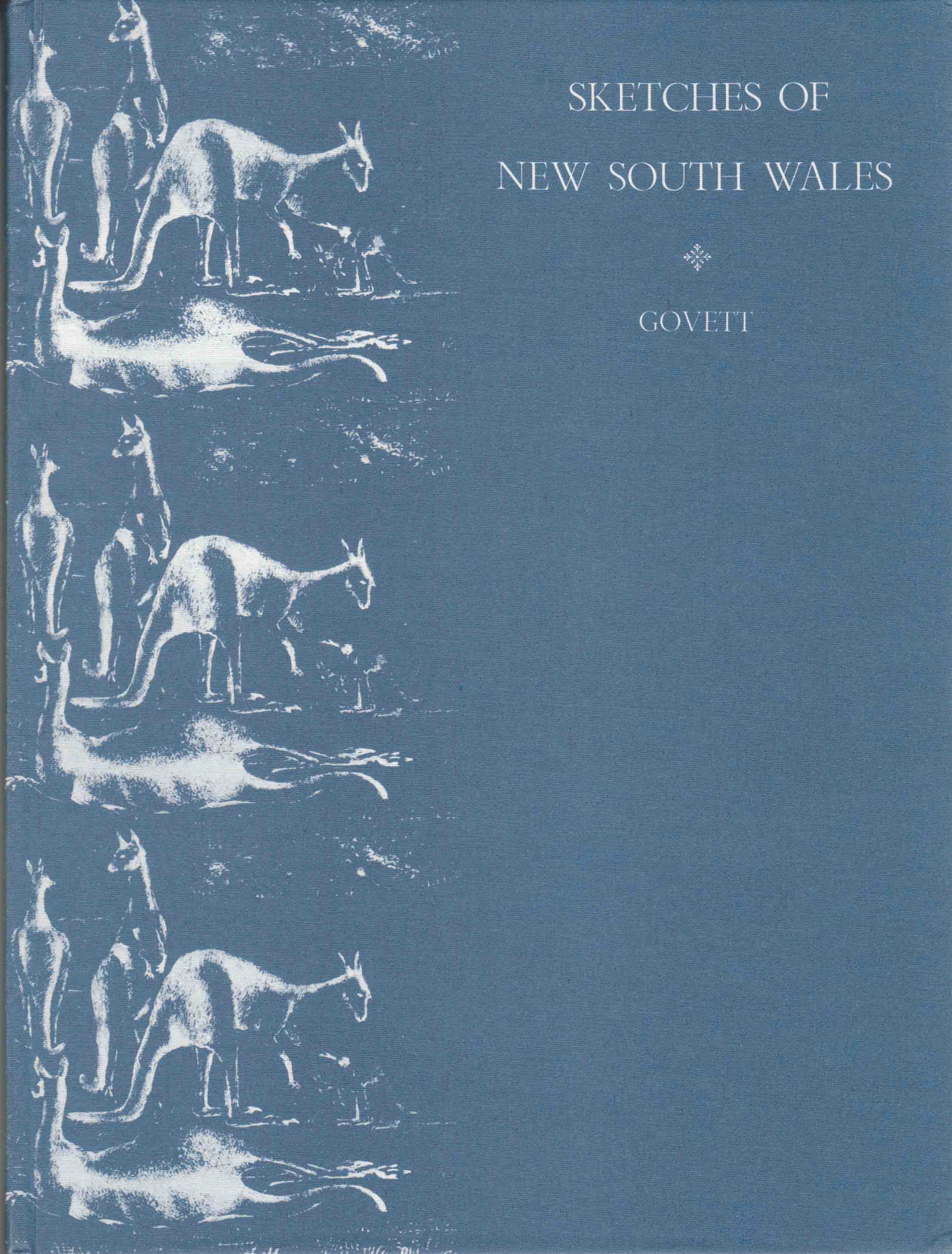
- Free Article: No
- Contents Category: Australian History
- Review Article: Yes
- Article Title: Resurrections
- Online Only: No
- Custom Highlight Text:
Most of these books are Oztalgia reprints of the more respectable and desirable kind, but three are original works, two of them by senior men of letters of the kind that any country is fortunate to have a corps d’elite of: I mean of course Howard and Pearl. Cyril Pearl, in Five Men Vanished, relates in 128 pages the facts relating to the disappearance of five men at Bermagui in 1880. One was the well-connected Lamont Young, 29-years-old and a government geological surveyor. Another was Maximilian Schneider, a young German assistant to Young, whose foreign accent and facial scar appear to have been enough to make him a prime suspect. The other three were fishermen. It was their boat which was found, stove in, on a beach some nine miles north of Bermagui. The boat contained articles belonging to Young and Schneider, though there was no reason why these two should have been in the boat.
- Book 1 Title: Australian Pioneers and Reminiscences 1849-1894
- Book 1 Biblio: John Ferguson, Sydney, in association with the Royal Australian Historical Society, $15.95, 0 909134 11 1
- Book 1 Cover Small (400 x 600):

- Book 1 Cover (800 x 1200):

- Book 2 Title: The Vine…and how to make Wine from Victorian Grapes
- Book 2 Biblio: Casuarina Press, PO Box 137, Surrey Hills, Victoria, $9.95
- Book 2 Cover Small (400 x 600):

- Book 2 Cover (800 x 1200):

- Book 3 Title: Sketches of New South Wales
- Book 3 Biblio: Gaston Renard, Publisher, Melbourne, $85, 0 9599899 1 9
- Book 3 Cover Small (400 x 600):

- Book 3 Cover (800 x 1200):

It really is a teasing mystery, and Pearl has done well to provide us with a rich assortment of ‘evidence’ from which we can make up some sort of prosecution case for ourselves. Unfortunately he will not himself speculate, which makes the whole exercise even more teasing.
Frederick Howard’s The Moleskin Gentry is an account of a family of Australian Britons, or British Australians, who settled in the area between Bathurst and Cowra shortly after their arrival in 1847. This is almost a paradigm story, the kind of thing you’d expect in a ‘generations’-type Australian novel: military style, transmuting into squatterdom, high living side by side with hard work and some levelling, raw gold found under a rock, a brush with Ben Hall, and then decline. It’s a valuable story, economically told, based on family records not only of the Bowlers, the main family concerned, but of the better-known Suttors.
Stewart Anderson’s Charles Browne Hardwicke is a short but well-researched book of 70 pages on his great-grandfather. Hardwicke was a naval officer in the Napoleonic Wars, emigrant to Australia, wrecked in a sealing venture in Bass Strait, explorer of the north-west coast, Van Diemen’s Land landowner, horse-breeder, turf club enthusiast and magistrate. He died at 92 in 1880. As with Howard’s book, the value of these sketches of people of middle interest is that they give the reader a much better opportunity to build up a picture of ‘what it was really like’ than do the more monumental biographies.
Gaston Renard, doyen of Australian antiquarian booksellers, has delectable premises in King Street, Melbourne, as many of us know to our cost. Renard is not only a great bookseller and a remarkable scholar and individual, he has a genuine antiquarian interest in books, all too rare in days when the last people one expects to find interested in books are publishers, academics, writers, librarians and booksellers. (In any normal bookish sense, most people in these categories are utterly illiterate.) Renard’s delight in his wares comes out splendidly in his catalogue Ignis Fatuus, an 84-item publication put out for the recent antiquarian booksellers’ far in Melbourne, dealing with books ‘which in one way or another are to some degree or other illuminative of the flight of man’s fancy and desires, or illustrative of his inventive imaginings; including voyages imaginaires and extraordinaires…’ I have nothing but praise for this delectably browsable item, lovingly and extensively annotated by Renard, except to remark that one of his vast expertise should not have two dates of publication on his catalogue, both of them Roman, both of them different and both of them wrong.
Australian antiquarian booksellers are now diversifying, into publishing on their own account and in at least one case into auctioneering. I’m not sure that this spread of function is theoretically desirable, however much it may be dictated by the smallness of the Australian market; but at least the facsimiles and similar publications put out by the booksellers are of high quality in editing and production. Renard has published Jess Young’s account of his participation in Ernest Giles’ fourth expedition of 1875. Ray Ericksen in his Ernest Giles speaks well of Young, ‘scion of a family of wealth and position in England’, who had good manners enough not to rebut Giles’ bad tempered comments on him. The pamphlet is usefully introduced by Annette Potts and contains some illustrations from the Illustrated London News.
One of Renard’s more ambitious productions is Govett’s (no, he made no leap) Sketches of New South Wales, articles originally written for the Saturday Magazine of London in 1836 and 1837. Annette Potts, who writes a meticulous introduction, refers to these articles as a ‘highly valuable firsthand account of early New South Wales’. Renard says that for twenty years he has been hoping to see these sketches in book form; and indeed, they are visually acute, interestingly illustrated and contain a wealth of well organised material on the New South Wales of the time, with many touches that stay in the mind: the convicts in the Mount Victoria stockades, for instance, roaring out the choruses around the great camp fire at night.
Renard has also published R.C. Miller’s Books: their history and influence. Miller was a bookseller who became librarian at Fitzroy from 1882-1913, and this lecture of his, reprinted from a 93-page pamphlet, discusses successful authors, libraries, newspapers: its chief value is as evidence of the great spirit of Improvement which, the first of the 19th century virtues, has moulded the 20th century, though the spirit itself survives unaffected only in the United States.
Hugh Anderson, well-known as educationist and author, has established a small press of his own, the Red Rooster Press. The press has published the report of the goldfields commission of enquiry established by Hotham immediately after the Eureka rebellion, a neat offset reproduction of a typescript copy of the original, augmented by a most useful introduction. It is good to have this important document available at a modest price.
Also from Red Rooster is Henry Field Gurner’s Chronicle of Port Phillip, a kind of chronological epitome of events relating to Victoria from 1770 to 1840. It was first published in 1876.
One pleasant piece of private venturesomeness in the facsimile field is the publication of J. Y. Walker’s History of Bundaberg. Ian Stubbin, the proprietor of Dryden Press, points out in a note attached to the review copy that he looked for a copy of this book for thirteen years and counted himself fortunate to find a copy, eventually, in Ken Hince’s stock, at $180. ‘I resolved that nobody else would have to pay such an outrageous price for so thin a volume.’ First published in 1890, this is a detailed, lively and sometimes irreverent account of events. How the present publisher, however, can claim that the material is ‘copyright’ beats me.
Casuarina Press has published The Vine, first issued in Geelong in 1859, and consisting of two prize essays on viticulture. Both were written by Geelong men; it seems an appropriate publication at a time when Geelong wines are again, after a century, beginning to come on the market.
W. A. Brodribb’s Recollections of an Australian Squatter was published in 1883. Brodribb was the son of a political prisoner, brought up in Van Diemen’s Land, and eventually a pioneer of the Monaro, Gippsland and the Riverina. Brodribb is both fascinating as to narrative – see.his account of the discovery and founding of Port Albert – and highly informative as to the economics of nineteenth century squatting ventures.
Bartley’s Australian Pioneers and Reminiscences first appeared in 1896, and in some respects his career oddly parallels Brodribb’s. Both were brought up in Van Diemen’s Land, both were involved in the Riverina, both came a cropper in the 1866 economic collapse. But the chief interest of Bartley’s book lies in his sketches of many early colonists, and in particular his account of early days along the Queensland coast.
The South Australian Library Board continue their magnificent publications program – sadly, now curtailed – with Jane Watts’ Family Life in South Australia. Originally printed for private circulation in 1890, this is a charmingly intimate account of social life in South Australia from the foundation and for fifty years after, and includes an interesting section on early Kangaroo Island.
On the whole an excellent crop of reprint material, some of it – Brodribb, Bartley, Govett and Walker – of major importance, especially in the reinstatement of the standard rather than the exceptional experience as historical source material. Historically we will never hear much from those who did not or could not write – the blacks, the convicts, many workers – but at least the continual extension of Australian reprints is bringing us the man and woman, small in fame if not in fortune.
Recollections of an Australian Squatter 1835-1883
By W.A. Brodribb
John Ferguson, Sydney, in association with the Royal Australian Historical Society, 0 909134 12 X
Family Life in South Australia fifty-three years ago dating from October, 1837
By Jane Isabella Watts
State Library of South Australia, $13, 0 7243 0065 1
Ignis Fatuus
By Gaston Renard
Gaston Renard, 109 King Street, Melbourne
Australian Pioneers and Reminiscences 1849-1894
By Nehemiah Bartley
John Ferguson, Sydney, in association with the Royal Australian Historical Society, $15.95, 0 909134 11 1
Books: their History and Influence
By R.C. Miller
Gaston Renard, Publisher, Melbourne, $18 pb., 0 9599899 2 7
Report from the Commission appointed to inquire into the condition of the Goldfields…
Introduced and edited by Hugh Anderson
Red Rooster Press, Melbourne, $12, 0 9596490 1 8
The Vine…and how to make Wine from Victorian Grapes
By John Belperroud and David Louis Pettavel
Casuarina Press, PO Box 137, Surrey Hills, Victoria, $9.95
The History of Bundaberg a typical Queensland Agricultural Settlement
By J.Y. Walker
Dryden Press, PO Box 46, Darlinghurst, NSW, $9.90, 0 909 162 12 3
Sketches of New South Wales
By William Romaine Govett
Gaston Renard, Publisher, Melbourne, $85, 0 9599899 1 9
Chronicle of Port Phillip…
By Henry Field Gurner
Red Rooster Press, Melbourne, $10, 0 9596490 0 X
Recent Journey of Exploration across the Continent of Australia…
By Jess Young
Gaston Renard, Publisher, Melbourne, $16 pb., 0 9599899 3 5
Charles Browne Hardwicke: An early Tasmanian Pioneer
By Stewart Anderson
Wentworth Books, Sydney, $8.75 pb., 0 85587 129 6
Five Men Vanished: The Bermagui Mystery
By Cyril Pearl
Hutchinson of Australia, $9.95 hb., 0 09 130720 1
The Moleskin Gentry…
By Frederick Howard
Hawthorn Press, Melbourne, $13.50 hb., 0 7256 0219 8


Comments powered by CComment